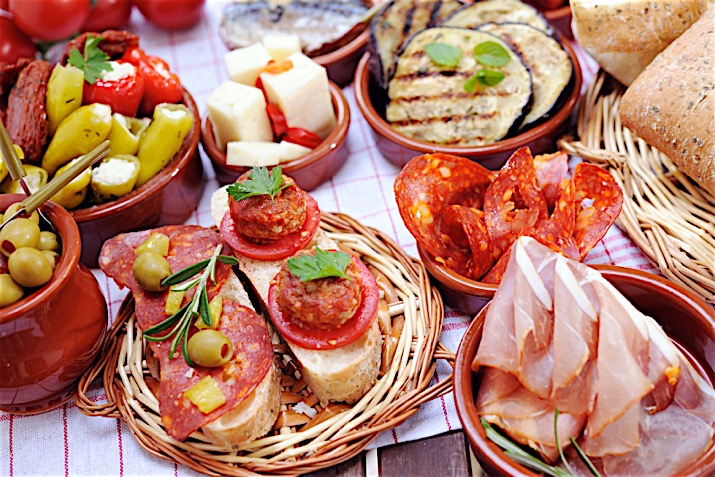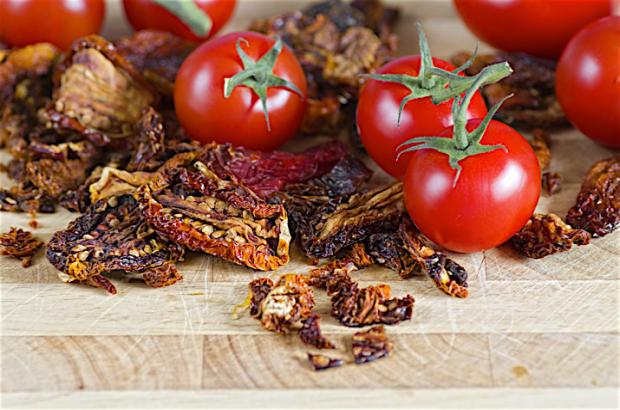Article
A Taste of Spain

On our first morning in Barcelona, my husband and I sipped tea on our balcony, anticipating a very special guest. Months earlier, I had arranged for a local cooking teacher to meet us there, take us to the famed Boqueria Market to shop, and then teach me to prepare traditional Catalonian tapas. Tapas, a brilliant version of bar snacks, are a Spanish specialty Americans have embraced and reinterpreted freely.
Right on time, Isabel Celma rang the doorbell, entered beaming, and our delicious adventure began. Isabel guided us by subway to the Boqueria, in operation since the year 1200, and bustling with shoppers. She pointed us to the best in local produce, nuts, fruits and freshly baked bread, some of which we purchased before journeying back to the apartment to cook. There, we talked food and chopped, sauteed and pureed a spread of authentic fare.
Nourished and educated, my husband and I set out to discover the amazing city of Barcelona, former home of Antonio Gaudi, Joan Miro, and Pablo Picasso. Catalonia is actually a country within a country, with its own government and language, perched on the northeast edge of Spain, by France. We walked and ate and drank, and then ate some more. Tapas bars offered plates of tiny, fried squid and whole sardines, "croquetas"(crispy croquettes studded with ham or filled with salt cod), fried artichokes and more. Grilled whole green onions and veggies with romesco sauce, along with olives, almonds and cheese make for great snacks alongside a glass of Sangria, the local Cava (Catalan sparkling wine), or a beer.
Spain is a country with several distinct cuisines, each region separated from the others by mountains, some land-locked, others nestled by the sea. All across Spain, rice, almonds, sour oranges and lemons, saffron, eggplant, spinach and olives rule, all brought to the country by a Moorish invasion and 800-year stay that began in AD 711. Cocido, a simple stew interpreted in each region of Spain, is from this period. When Isabella and Ferdinand threw out the Moors in 1492, the country became Catholic, and adopted pork in a big way, and salt cod on Fridays. Once the foods of the Americas made it to Spanish shores, tomatoes, peppers, potatoes, chocolate and chilies became important ingredients in Spanish cuisine.
These days, it's impossible to imagine a Spain without peppers, especially paprika and chilies. Several varieties of peppers are prized, like the Padron peppers I cooked with Isabel, or the delicate piquillos, small sweet red peppers that are perfect for stuffing. Dried chilies are used in spicy shrimp and bean dishes, and the milder ones, in romesco sauce.
The use of bread and ground nuts to thicken sauces and soups is a distinctive Spanish habit, illustrated by gazpacho, romesco and other garlicky sauces served with fish and meat. Paella, the saffron-infused rice dish of Spain is made with vegetables, meats and seafood and is traditionally served at festive gatherings. Cocido, a slow-simmered stew from Madrid, is made in countless variations, with meat, sausages, chickpeas, vegetables and wine and is a hearty stew, perfect for a crowd. Empanadas, hand-held savory pies filled with meat, fish or veggies make a delicious on-the-go snacks but are also served tapas style. Patatas bravas, hugely popular and widely available in tapas bars far and wide, are little potatoes in a spicy tomato sauce.
Incorporating a bit of Spanish flair into your cooking is easy to do. Add some pine nuts or almonds, and raisins to a saute of leafy greens. Roast your favorite veggies and drizzle them with a sherry vinegar and olive oil vinaigrette. An easy version of paella is to saute an onion, crumble in some saffron, and add rice and veggies, even sliced pre-cooked chorizo, then cook until the rice is tender. A thick soup made with chickpeas and a ham bone or chorizo, carrots and onions and seasoned with smoked paprika makes a simple Spanish Stew.
Have a tapas night, and serve small portions of several tasty Spanish tidbits (see recipes below), with Spanish wine. Manchego and other aged sheep’s milk cheese are often served with membrillo, a quince paste, but if you don't have that, pair your cheese with a thick jam for a dessert course.
Then, close your eyes and picture the beautiful blue sea, the breathtaking mountains, and the friendly people of Spain.
Try these tasty tapas:
- Chorizo Stewed in Red Wine
- Spanish Pork and Chorizo Stew with Olives
- Spanish Oyster Mushrooms with Jamón
- Patatas Bravas with Lemon Alioli
- Tuna Empanadillas
- Spanish Chickpea and Spinach Tapa
- Spicy Shrimp Tapa













